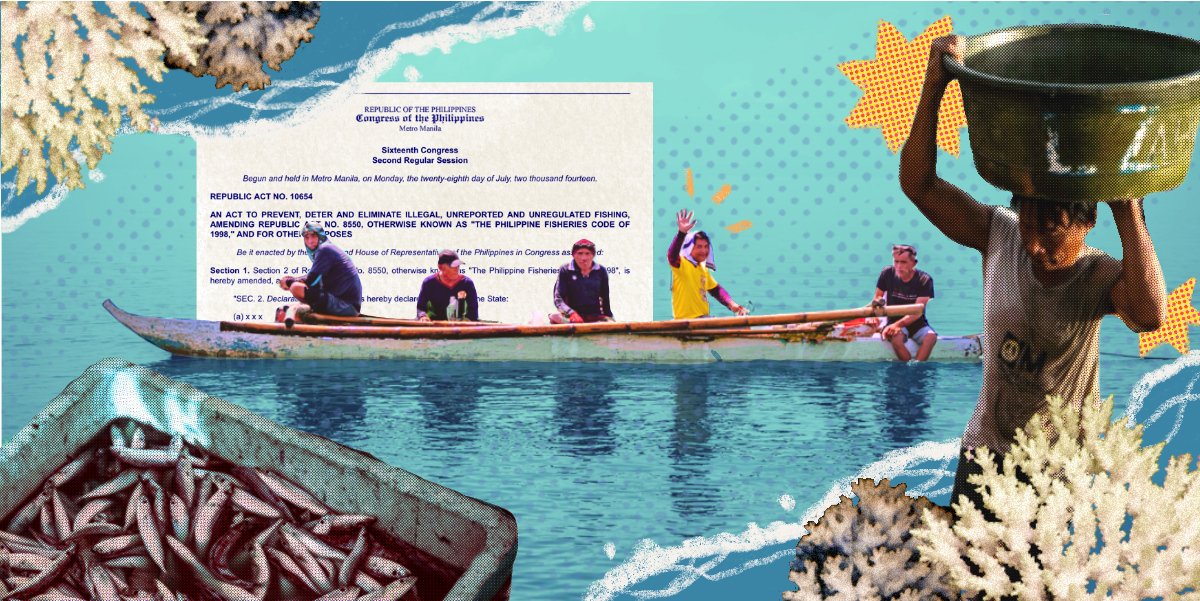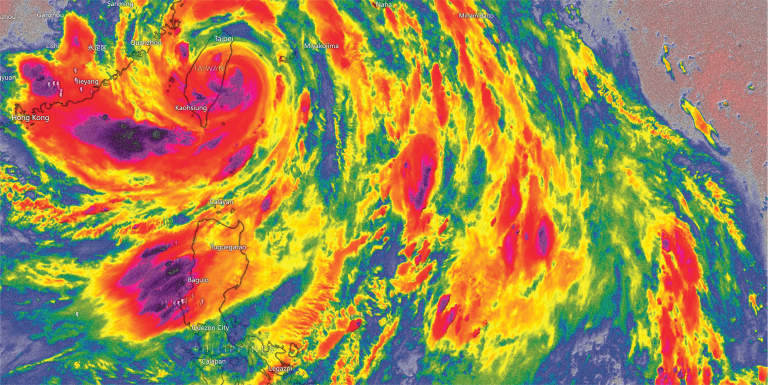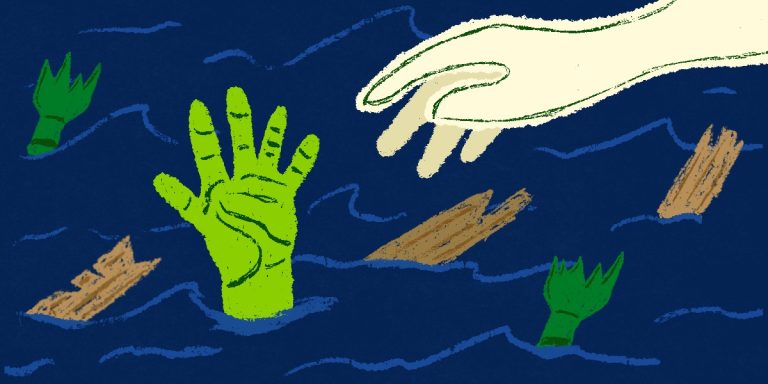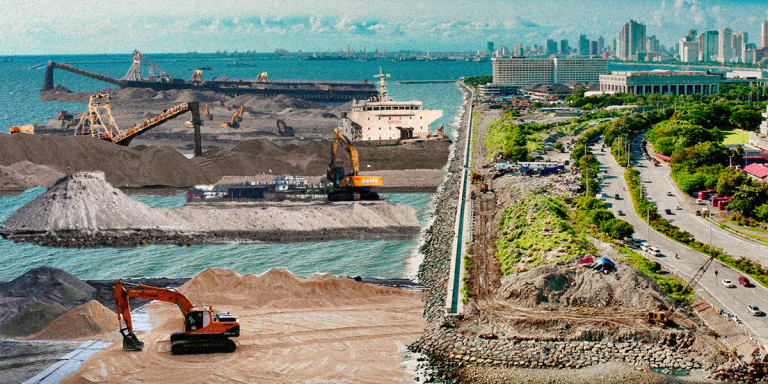Crossing tides: When Philippine laws fail the sea and its people
Decades of flawed legislative efforts have put marine life and the people who depend on it in danger. With growing political and environmental pressure, will the tides change?
In 2010, the local government of Bien Unido, Bohol had a strange idea. They installed a 14-foot statue of Sto. Niño and a Virgin Mary grotto at the heart of the Danajon Double Barrier Reef, 60 feet underwater. The purpose was not to give marine life a place to worship, but to protect them from illegal fishing. The local government hoped that this would discourage local fisherfolk, many of whom are religious, from using dynamite that might destroy the sacred statues.
“We recorded at least 20 blasts a day then,” said then-Mayor Rey Nino Boniel in an interview with a local newspaper. “There have been strict coastal laws implemented, but [they] did very little to discourage illegal fishermen who hide in islands and islets.”
Since the statues were installed, the blasts have been reduced from hundreds to just a handful, allowing corals to begin regrowing in the Danajon Reef.
The underwater saints may have helped stop the explosions in Bien Unido, but in most coastal areas of the Philippines, dynamite fishing and other destructive practices remain a longstanding problem. Decades of unsustainable fishing have pushed many marine species and coral systems to the brink of extinction.
Up to 90% of the country’s coral reefs were already in poor condition in 2017, according to a study led by marine scientist and National Academy of Science and Technology Academician Dr. Wilfredo Licuanan. Another report suggests that human activity directly threatens 85% of the reefs in the Coral Triangle, the important global center for marine biodiversity. Critically, the Philippines lies at the apex of this Coral Triangle, with overfishing, pollution, and coastal development standing out as the most pressing threats.
Small-scale Filipino fishers, or those whose vessels do not exceed three gross tons, are often blamed for illegal practices. But they, too, are stuck between a rock and a hard place. Dwindling fish stocks and stiff competition from commercial fishing companies have driven some to use illegal methods in a desperate attempt to earn a livable income.
Since the 1970s, the government has enacted a series of legislation meant to simultaneously address marine degradation and small-scale fishers’ livelihoods. But these laws have failed to strike a balance between the two. Earlier policies favored economic gains over marine conservation, setting off a domino effect that has helped fuel the present-day ecosystem destruction and food insecurity, while current ones put small-scale fishers at a disadvantage.
Now, even those imperfect protections are under threat. A recent court ruling in Malabon may nullify key provisions of the country’s fisheries law, and the ongoing conflict in the West Philippine Sea puts both marine life and the local communities at risk, leaving them to face an even more uncertain future.
Net loss
In the 1970s, the Philippines was experiencing an economic boom. To sustain growth, the government launched a series of legislation and development programs focused on increasing fish production. Among these was the Fisheries Decree of 1975, a landmark law that emphasized the need to develop the fishing industry in order to “achieve the maximum economic utilization of its fishery resources.”
While the decree laid the groundwork for regulating illegal, unreported, and unregulated (IUU) fishing, it offered little in terms of protecting marine biodiversity or promoting sustainable fisheries management. Subsequent legislative efforts also failed to curb overfishing or slow the degradation of coral reefs and other marine habitats.
In fact, the push to maximize marine extraction for economic gains may have inadvertently encouraged harmful fishing practices. The use of destructive fishing methods declined in the 1960s but rebounded in the same period when these legislations were enacted, as reported in a study by the University of British Columbia. Another paper by the International Center for Living Aquatic Resources Management, meanwhile, suggested that the first signs of overfishing and habitat decline emerged during this period.
Until that point, fisheries management was centralized and controlled at the national level. By the 1980s, however, it was becoming apparent that the national government was ill-equipped to protect the richly diverse marine ecosystems across the country.
Casting new lines
The fall of the Marcos Sr. dictatorship in 1986 brought a new wave of strategies on fishery management. Conservation, sustainability, and rehabilitation were brought into the conversation, along with a focus on empowering small-scale fishers and local government units (LGUs). In 1998, the seminal Fisheries Code of the Philippines was passed, decentralizing fisheries management and giving LGUs and local communities more rights and control over their municipal waters. The law allowed only small-scale fishers to operate within 15 kilometers of the coastline, with some exceptions determined by the LGUs.
The 1998 Fisheries Code also stimulated the conversion of more marine territories into Marine Protected Areas (MPAs), zones that are regulated or restricted from human activities, including fishing by both small-scale and commercial fishers. These MPAs were intended to safeguard biodiversity and allow fish stocks and coral ecosystems to recover.
But implementation proved challenging. Many LGUs lacked resources to manage MPAs effectively, leaving most of them unprotected and often dubbed “dummy parks.” By 2010, the use of destructive fishing gears such as dynamites and poison had increased by three times the recorded rate in 1960. According to the environmental group Oceana, about 75% of the Philippines’ fishing grounds are depleted, with IUU fishing by large fishing companies as the main cause.
In 2014, the European Union issued a yellow card to the Philippines and warned that, if the country still fails to deter IUU fishing, it would be banned from exporting to European states. The government responded by revising the 1998 Fisheries Code in 2015. The amended law required commercial fishing vessels to install vessel monitoring systems to track their movements within Philippine waters. It also imposed heavier penalties on vessels caught fishing illegally: up to PHP 100,000 for small-scale fishers, and up to PHP 5 million for commercial operations.
But in practice, enforcement has been uneven. In 2023, Oceana reported that only 58% of commercial fishing vessels had vessel monitoring systems installed. The other 42% are “illegally fishing, causing destruction of marine habitats.”
Meanwhile, small-scale fishers are put under scrutiny. An article by Bulatlat covered the story of a fisherman who was penalized three times in Cavite and was fined a total of PHP 50,000. The officials confiscated his boat and fish catch, leaving him with no food or money to bring home. Some officials in Cavite have become notorious for arresting fisherfolk. The fisherman called it “pangongotong” or extortion.
Rough seas for small-scale fishers
Small-scale fishers produce about half of the Philippines’ total fish catch. This volume is the collective effort of two million fishers, who make up 85% of the total fishers in the country. A 2020 survey conducted by the Food and Agriculture Organization of the United Nations found that a small-scale fisher earns PHP 107,000 annually on average, equating to about PHP 9,000 per month—well below the poverty threshold income of about PHP 11,000 that year. In 2023, the Philippine Statistics Authority (PSA) estimated that 27% of Filipinos living in poverty are fisherfolk.
As a result, some small-scale fishers resort to illegal fishing. In a qualitative study that interviewed small-scale fishers participating in illegal fishing in Misamis Occidental, these economic considerations arose repeatedly.
“I never earned this much for the past years of doing normal fishing,” he said, reflecting on his 10 years of work at sea. Another said he was simply doing this for his family: “I need to feed my family as well as to provide for my mother’s medication.”
For some communities, destructive practices have been passed down through generations, becoming the norm. In the same study, one fisherman recalled that his father taught him how to fish, saying, “It made me develop the interest to engage in illegal fishing.” Others learned illegal fishing through their peers.
In a separate study from the University of Southeastern Philippines, fisherfolk from Malanggas, Zamboanga Sibugay saw illegal fishing as their only means to compete with commercial fishing industries.
“Our community is under pressure,” one said. “The sea’s industrial vessels are fierce competitors, and the fish [stocks] are in decline. All the while, our family must live on a small income.”
Rougher seas ahead
Now, with recent developments on the West Philippine Sea and the Fisheries Codes, the tides are shifting even further out of the fisherfolk’s favor.
For fishers in the National Capital Region, MIMAROPA, and Central Luzon, the geopolitical conflict happening in the West Philippine Sea has turned what used to be open fishing grounds for generations of coastal communities into hostile waters. Many small-scale fishers, who can barely afford to repair their boats, have been chased away from their traditional fishing spots by foreign vessels.
Fish catch is also shrinking because of the conflict. China Global South reports that fish production in those regions has been declining over the past decades. In 2011 to 2020, these regions contributed USD 1.27 billion to the national economy, down from USD 1.45 billion in the previous decade.
Meanwhile, in October 2023, commercial company Mercidar Fishing Corporation filed a petition to the Malabon Regional Trial Court. They challenged several provisions of the amended Fisheries Code, including the clause granting small-scale fishers exclusive rights to municipal waters. Two months later, the Malabon court sided with the fishing company, declaring those provisions unconstitutional.
The Office of the Solicitor General (OSG), which represents the Bureau of Fisheries and Aquatic Resources and the Department of Agriculture, attempted to challenge the ruling. But a series of bureaucratic mishaps allowed the ruling to stand. The OSG then elevated the case to the Supreme Court, requesting a review of the Malabon court’s decision. However, the Supreme Court dismissed the petition, citing that the deadline had lapsed and declaring the lower court’s ruling “final and executory.”
This means that local fishermen and the LGUs will be stripped of their jurisdiction over municipal waters. Commercial fishing vessels will now be legally permitted to operate within areas previously reserved for small-scale fishers. These exclusive zones, considered lifelines for coastal communities, are now at risk of being dominated by large fishing corporations. Worse, the biggest offenders to marine life will now have the chance to do even more damage.
On the horizon
The good news is that the ruling is not yet fully final, contrary to the Supreme Court’s verdict. The case can be reopened through a Motion for Reconsideration, which the OSG filed in January this year. Oceana and municipal fisherfolk have also submitted a Petition In Intervention, putting more pressure on the Supreme Court to undo the court’s decision.
Our fisheries laws leave much to be desired, but they are on the right track. Including small-scale fisheries and LGUs in the conversation created a sense of bayanihan, a shared responsibility for the common good. Vessel monitoring systems have great potential to curb IUU fishing, as proven in other countries.
The next steps are implementation. The effectiveness of laws hinges on their enforcement. Monitoring systems must be mandatory and transparent. LGUs need resources, not just responsibilities, and small-scale fishers must be treated not as offenders, but as partners in conservation. When LGUs and small-scale fishers are backed by funding, training, and legal authority, it leads to better compliance and a more secure marine life.
A systematic review published in Marine Policy found that the biggest hindrance to an effective management plan is the community’s reliance on fishing as their main, if not the only, source of income. Alternative livelihoods offer a way out of illegal fishing.
We don’t need to look any further than our seas for proof. In the Apo Island MPA, one of the largest and most successful no-take zones in the country, community-based efforts have helped the once-depleted fish stock to replenish. The sanctuary now teems with life, and so do the people. Apo Island has even transformed into an ecotourism hotspot: locals earn by guiding tourists and renting boats, turning marine protection into a sustainable livelihood.
A similar story also emerged in Bien Unido. The underwater Sto. Nino and Virgin Mary in the Danajon Reef have become a tourist attraction, and the locals supplement their income through seaweed farming.
Meanwhile in Lian, Batangas, Licuanan and colleagues have joined forces with the local government and communities to advance citizen science initiatives. In addition to ecotourism, coastal families are equipped with the skills and knowledge to identify corals declining in health and actively engage in research activities, while their children are sponsored in schooling programs—simultaneously protecting these marine ecosystems and securing the local youth’s future.
The real challenge is in replicating the success of these communities to the thousands facing a very different reality. It will take more than religious symbols. It will require enforceable commitments from the government on a national and local scale to make legislation work for both marine conservation and the livelihoods of small-scale fishers.
In the meantime, the submerged Bien Unido statues will continue to do their job. While they were perhaps first designed to highlight the seas as God’s creation, they could also very well remind us of the government’s failure to protect marine life and the people who depend on it.








